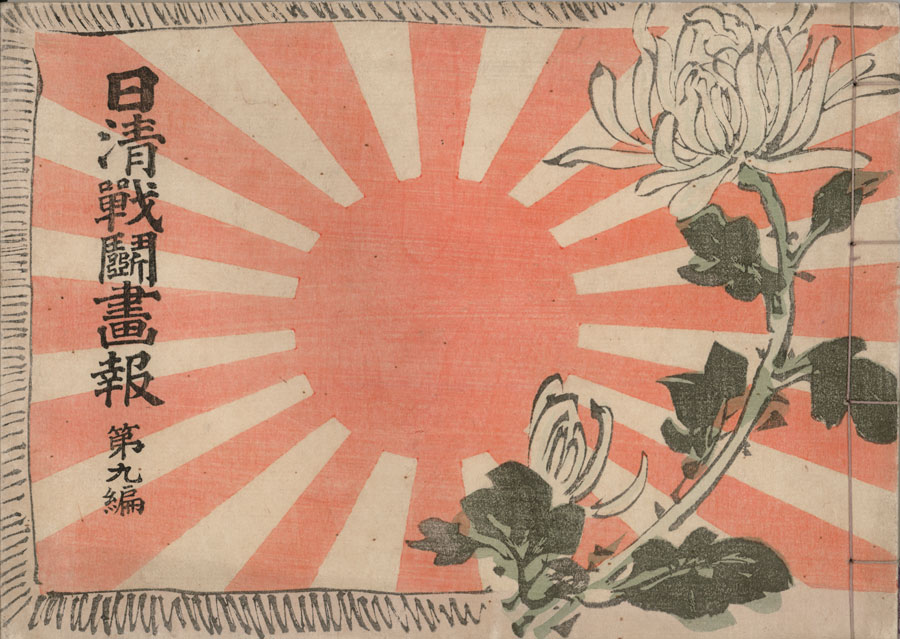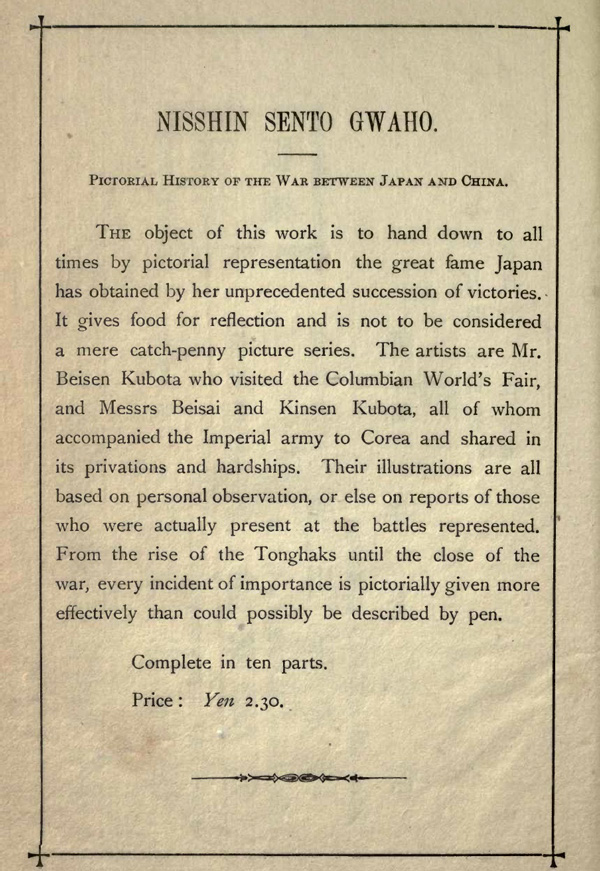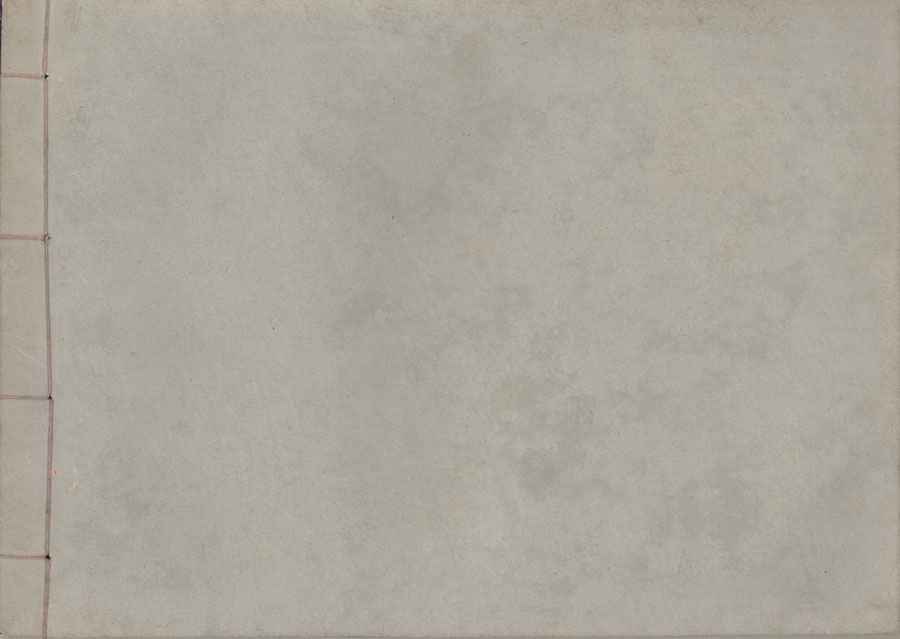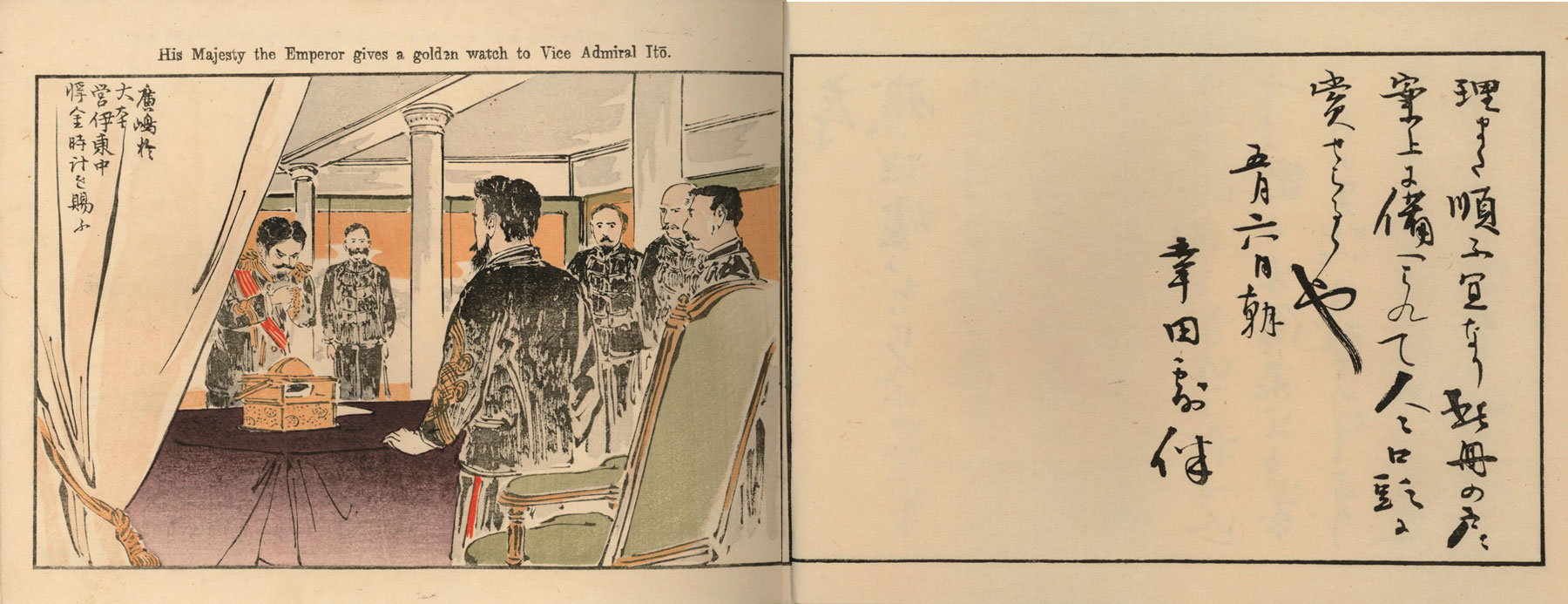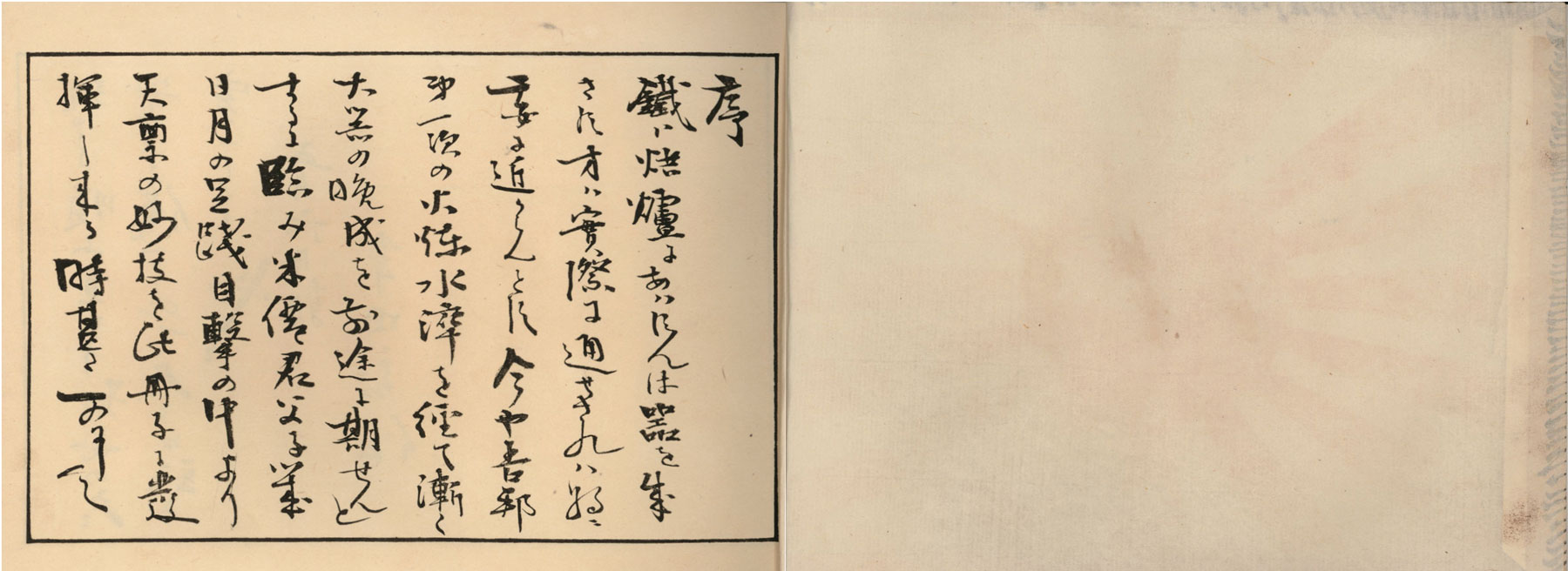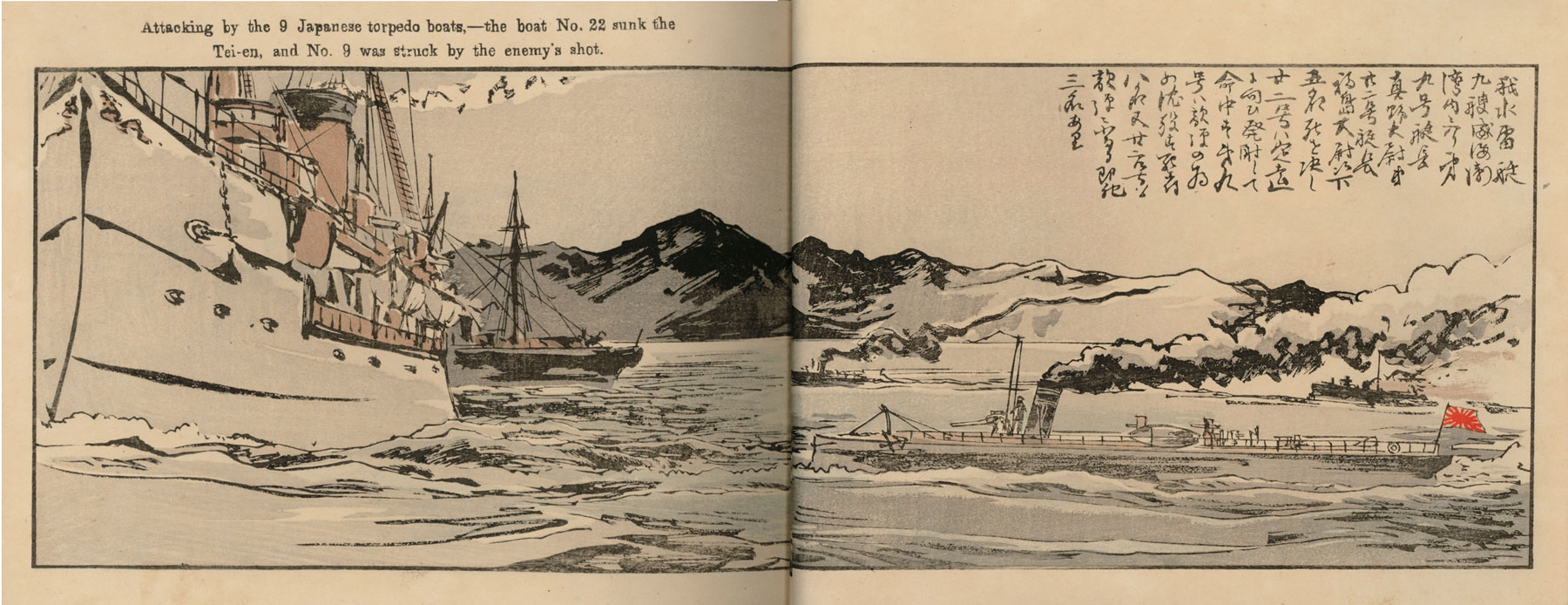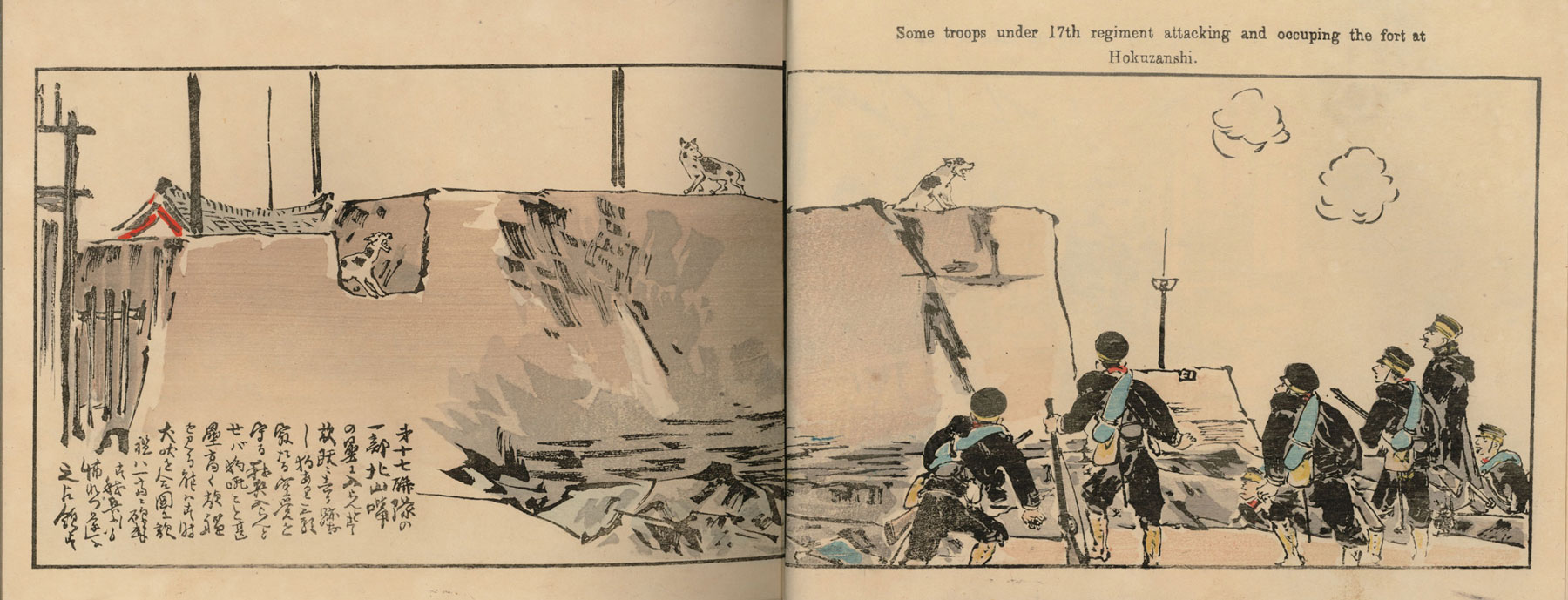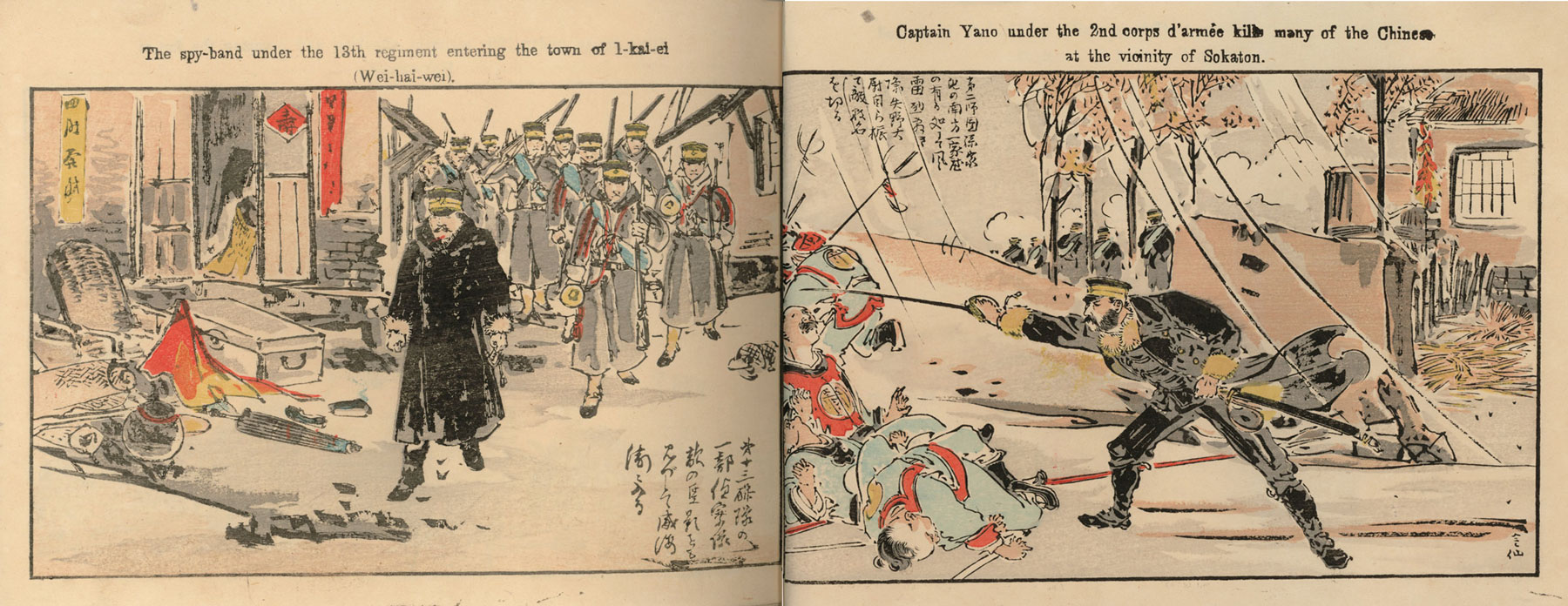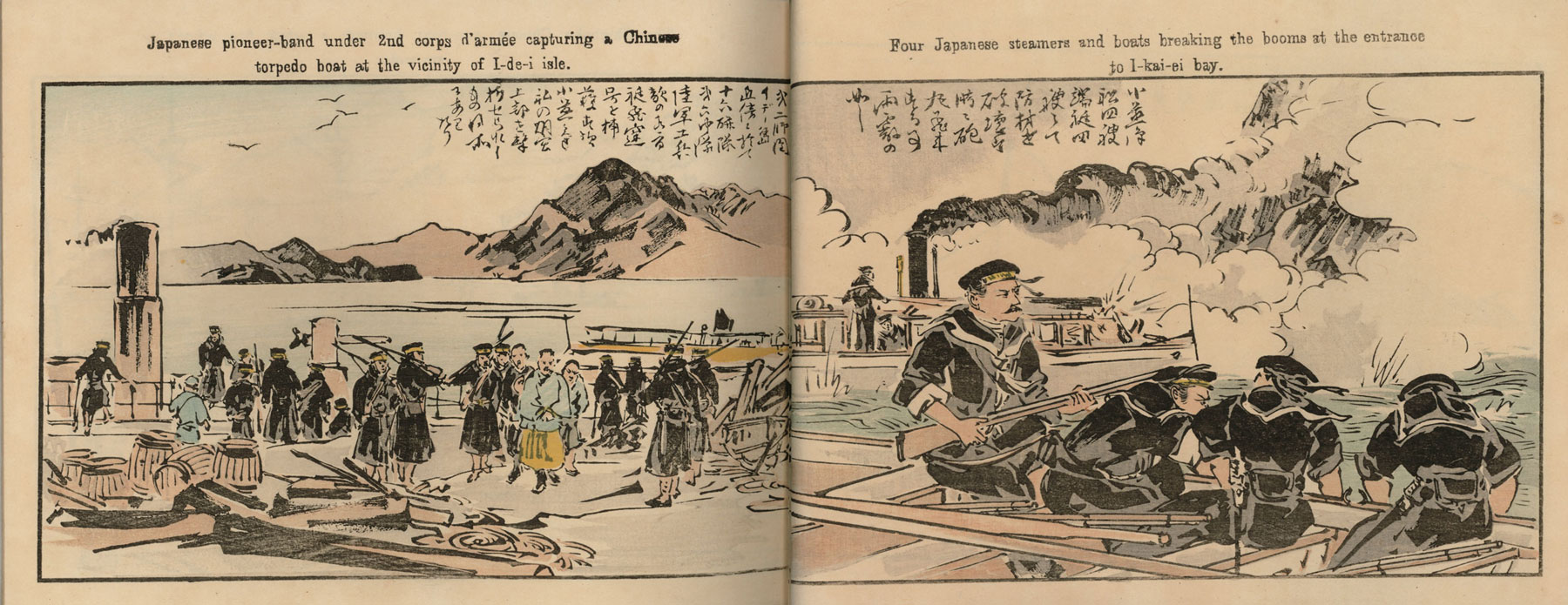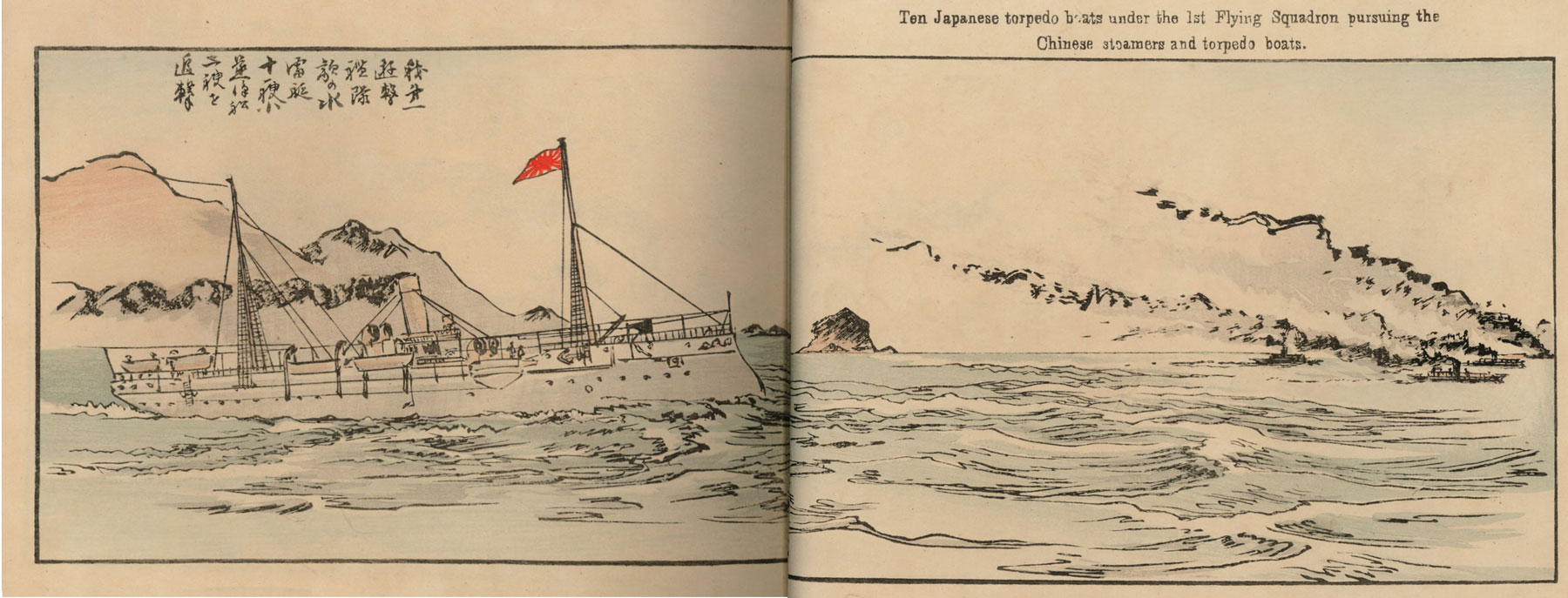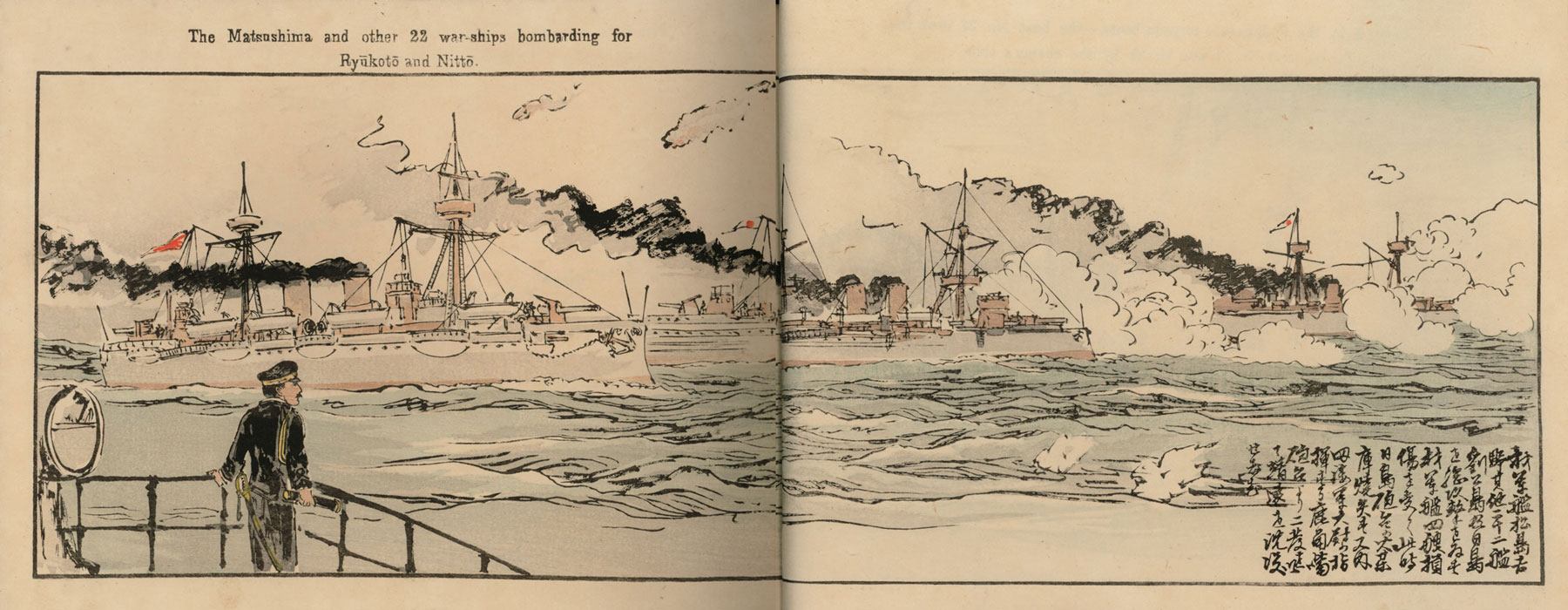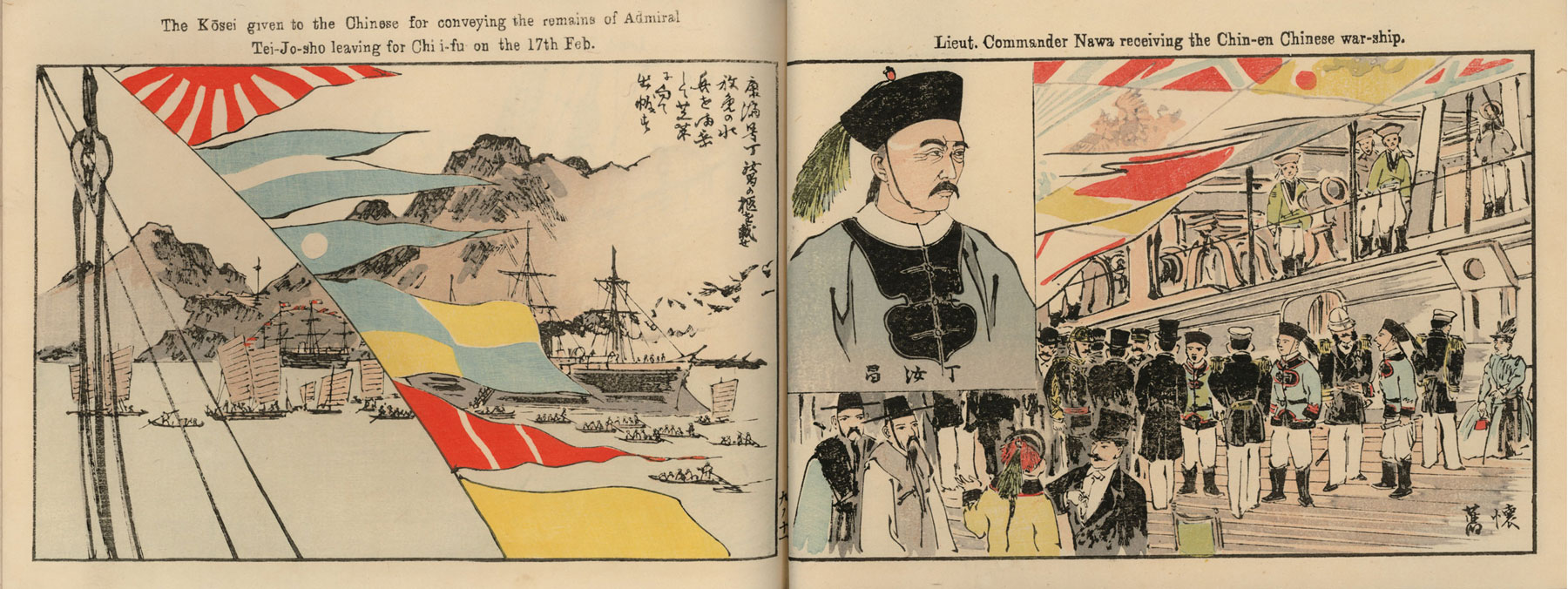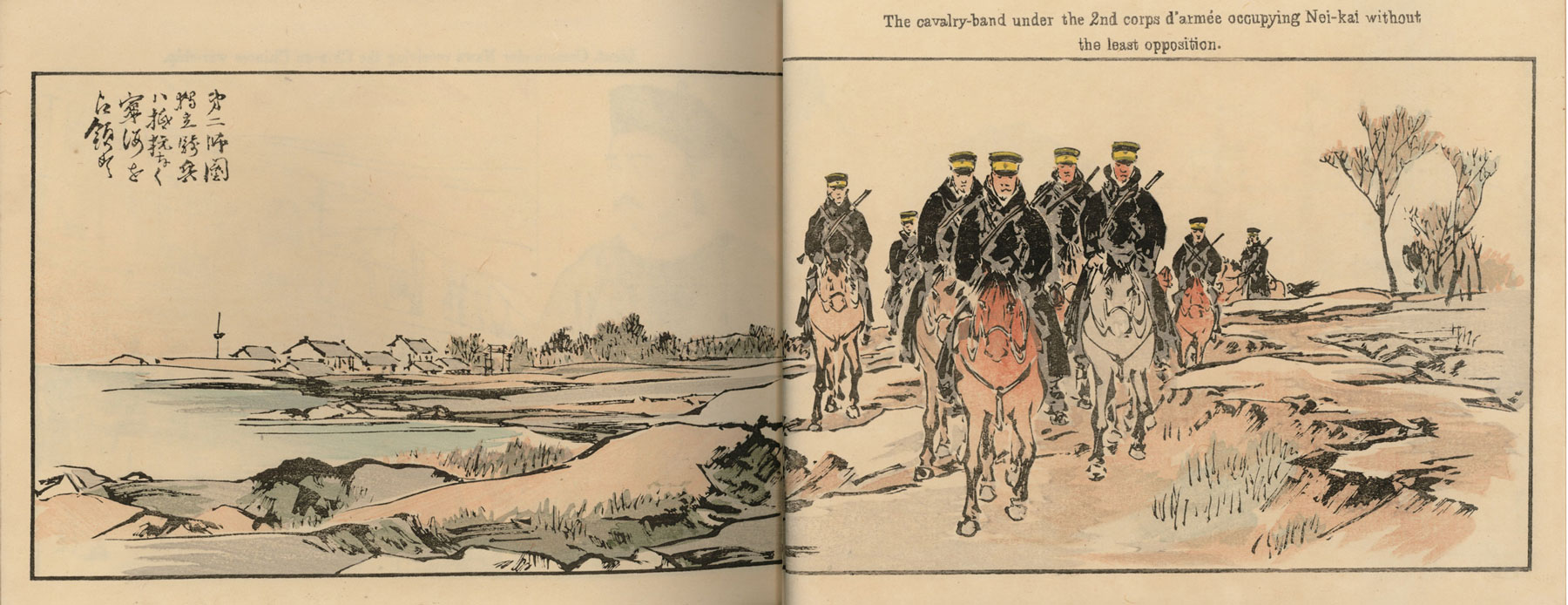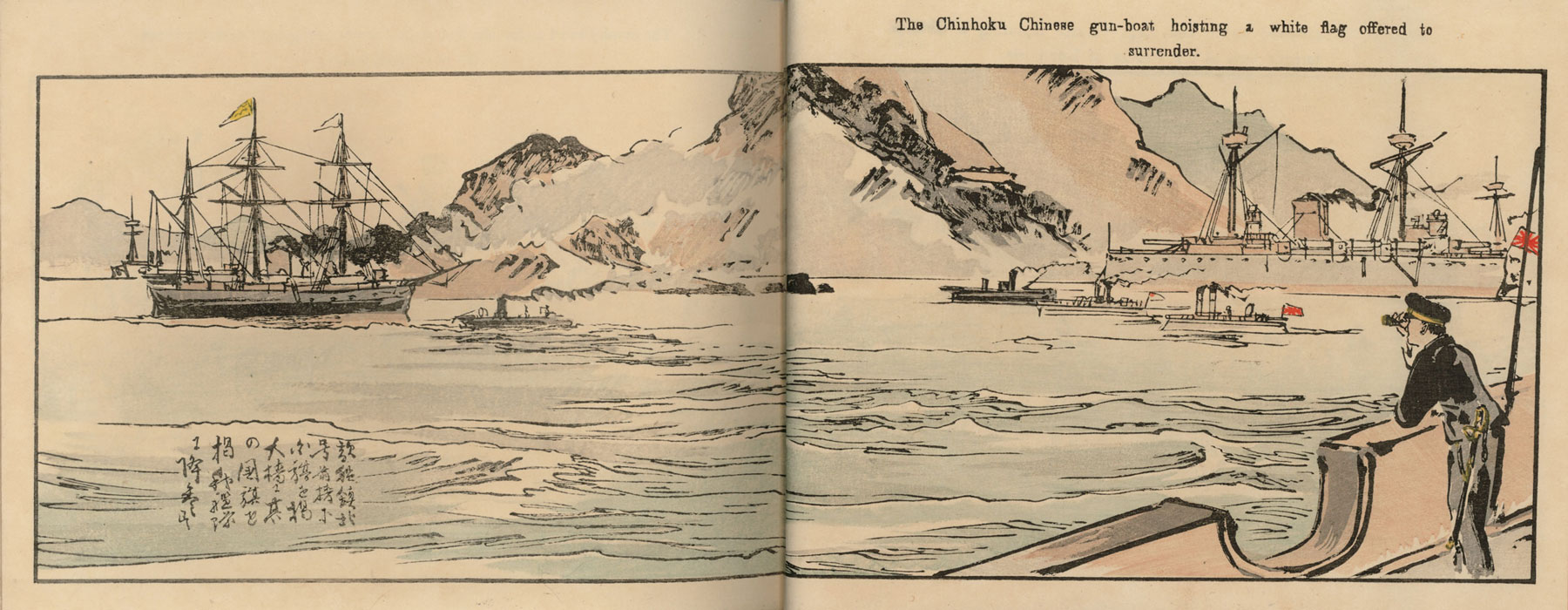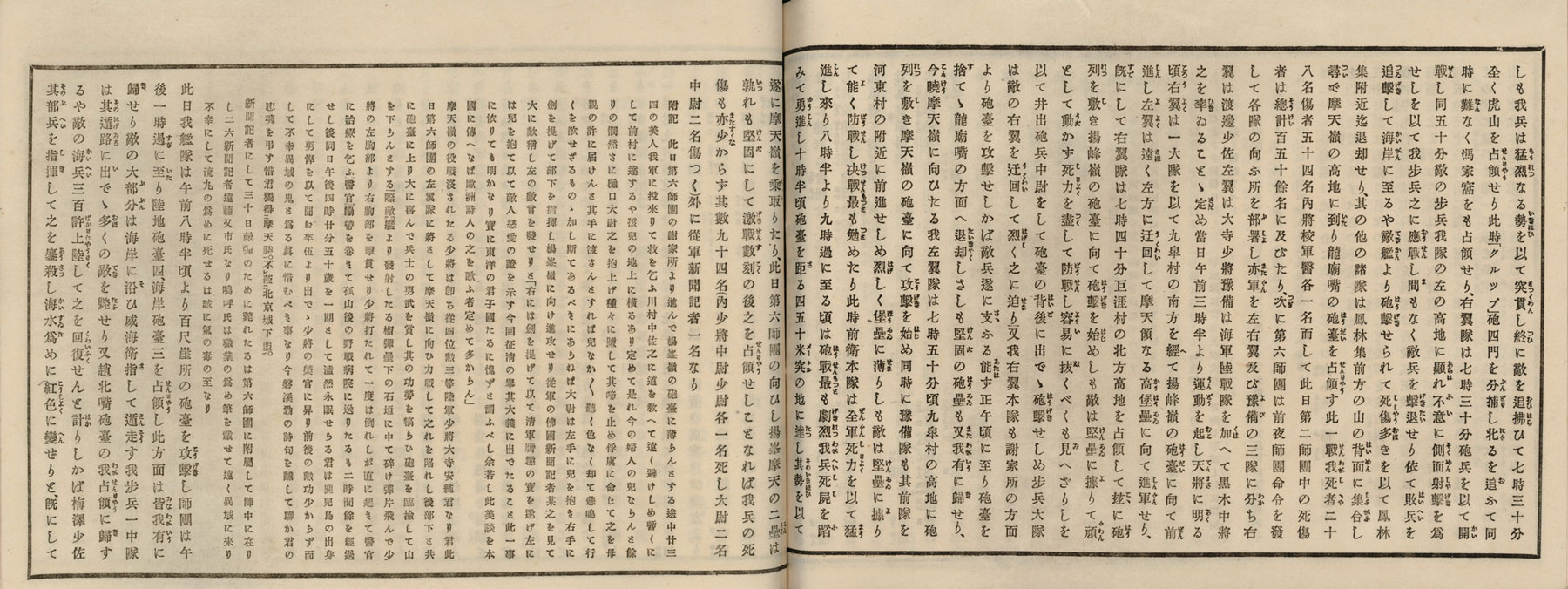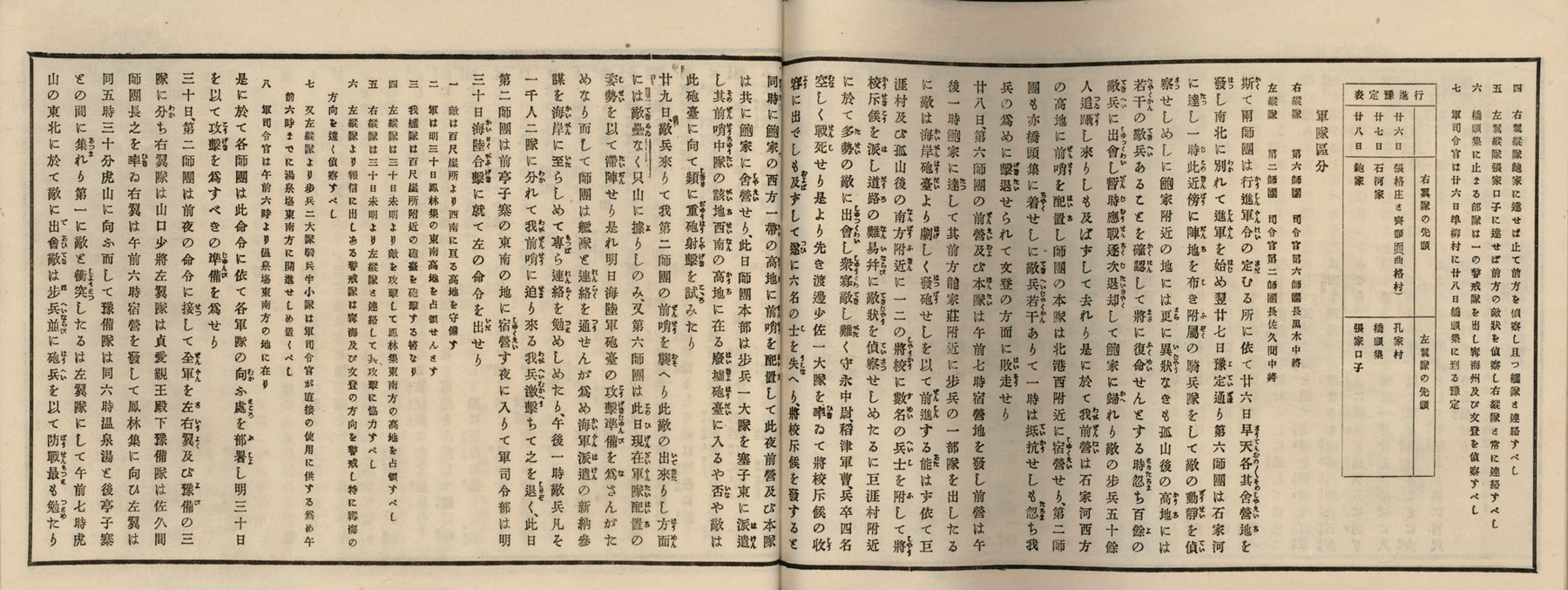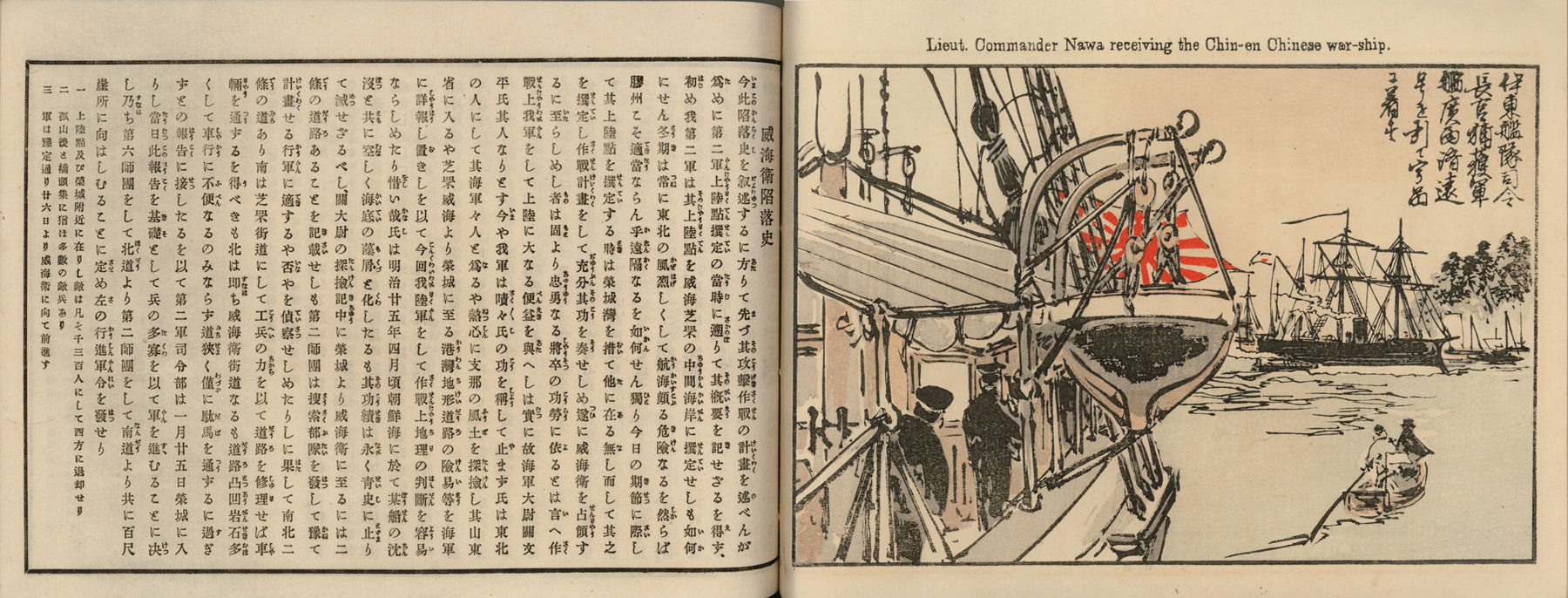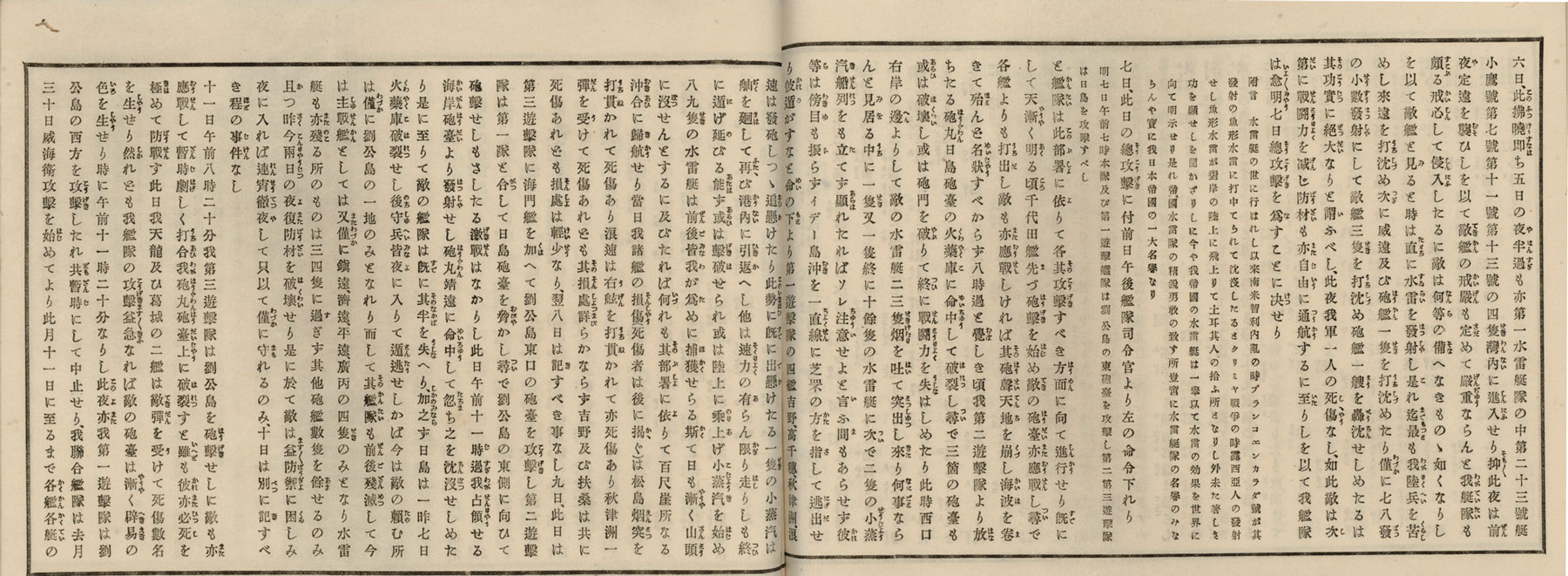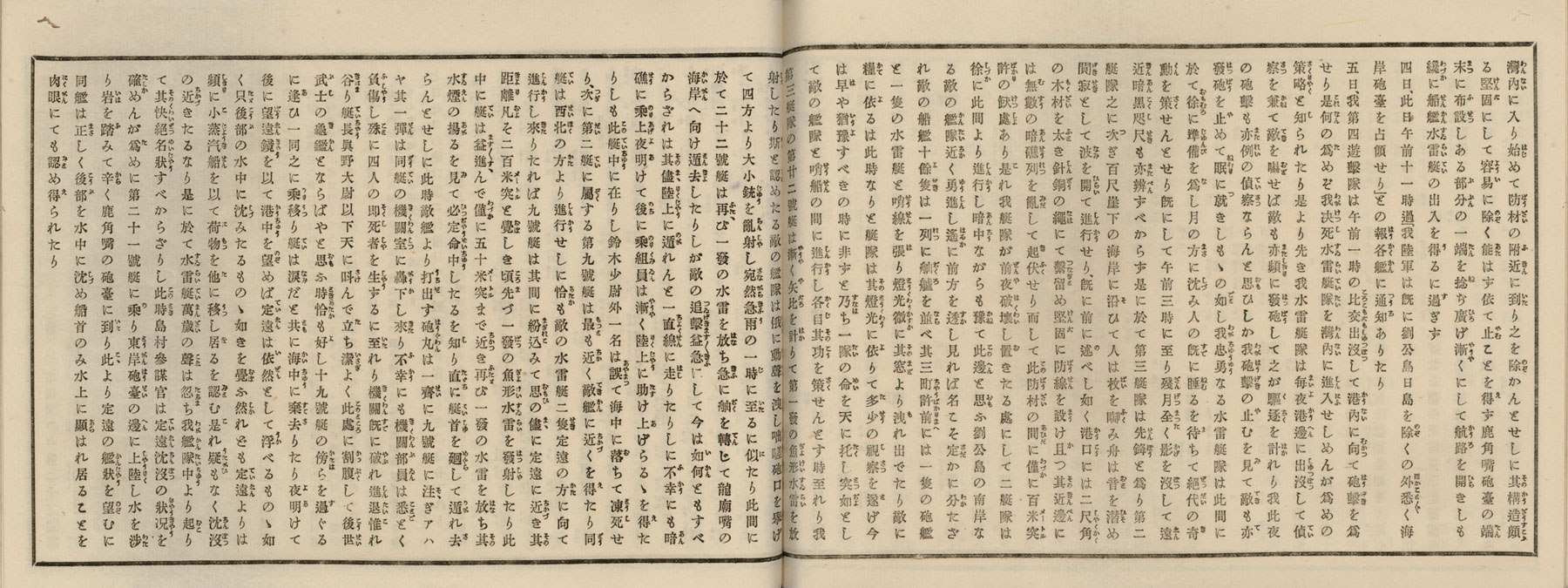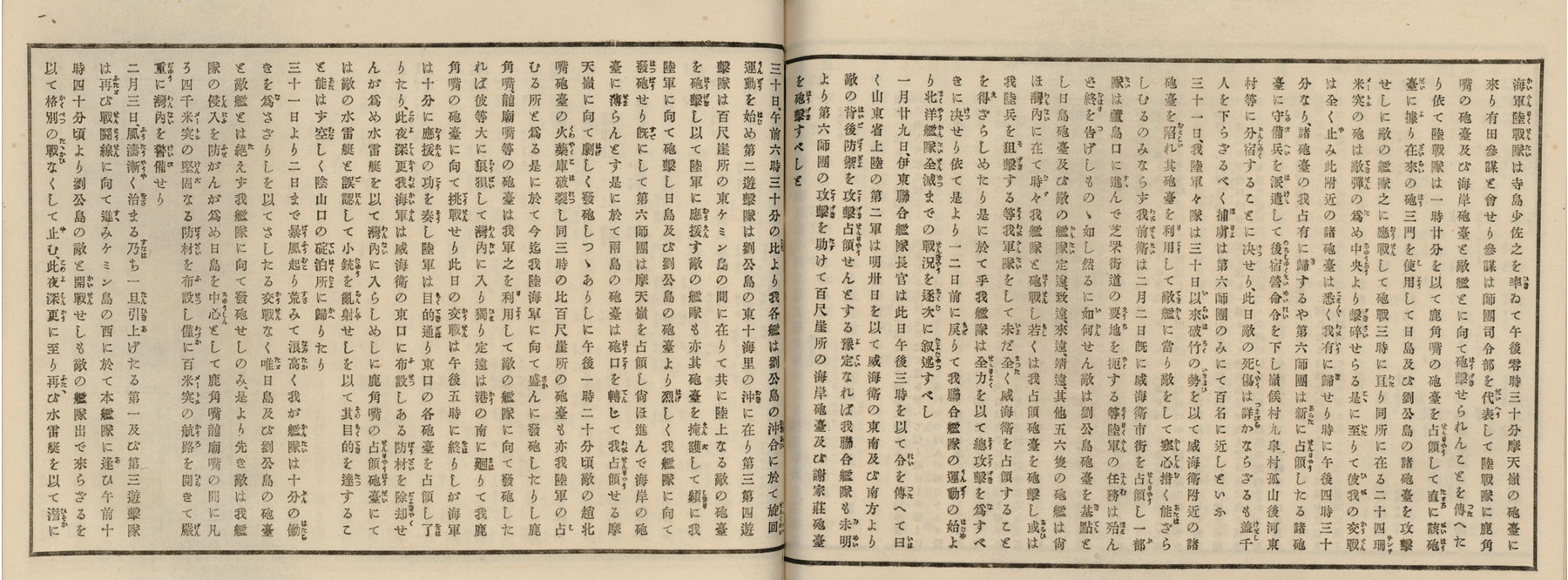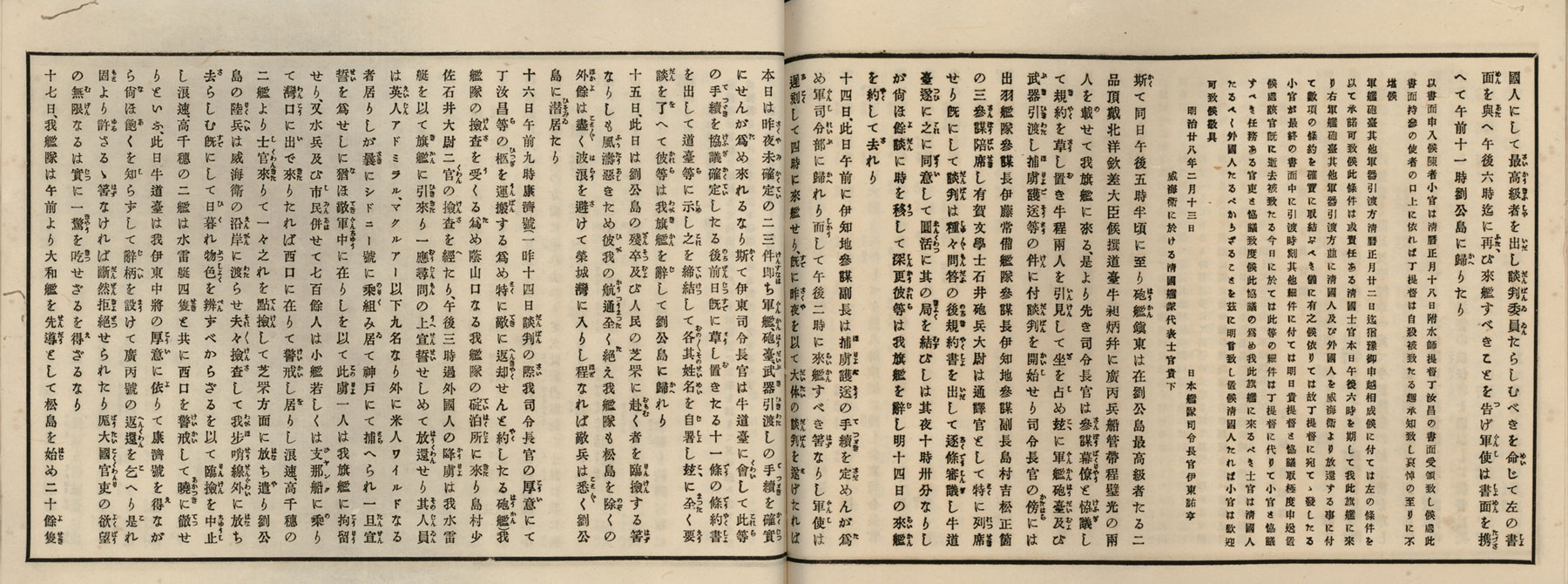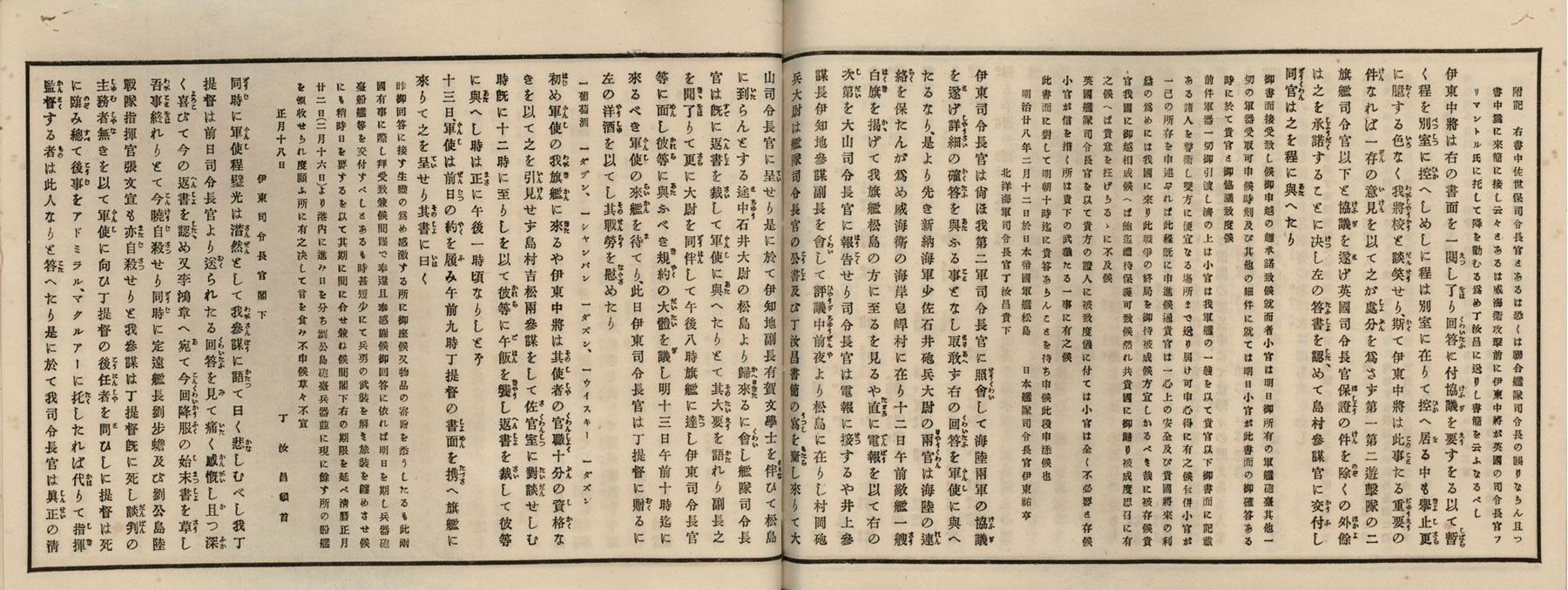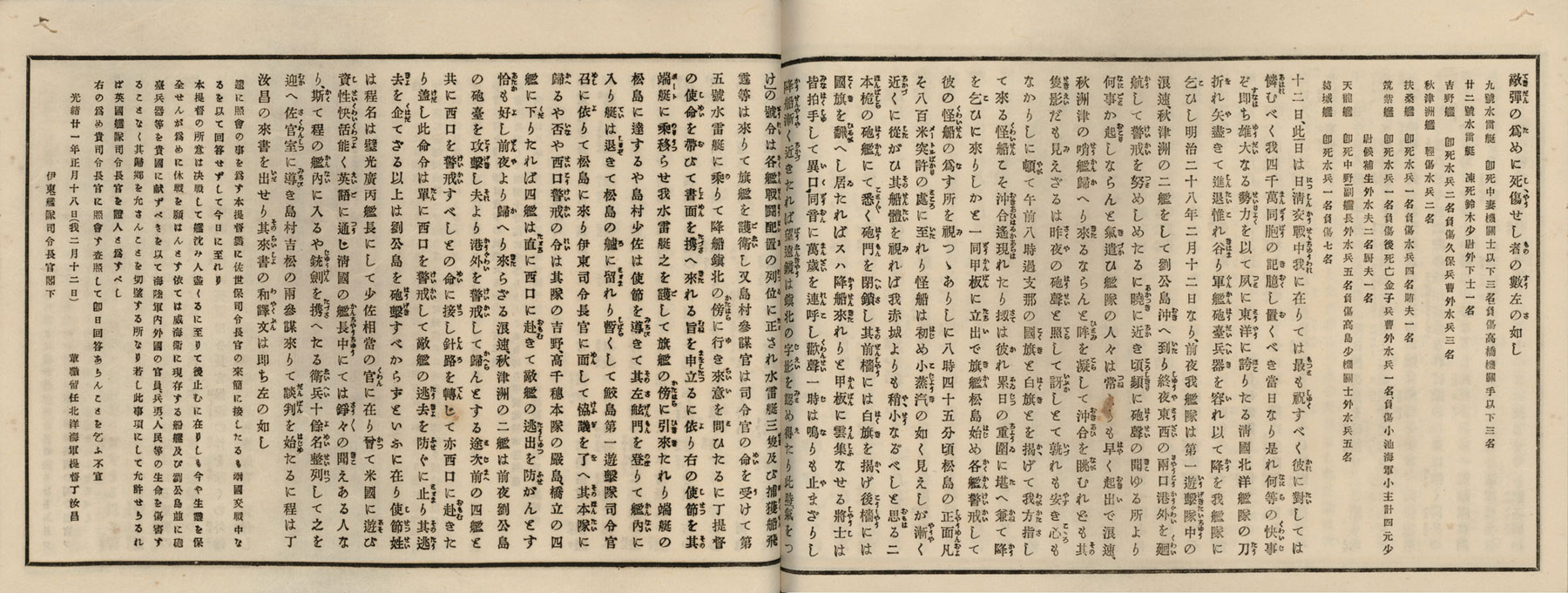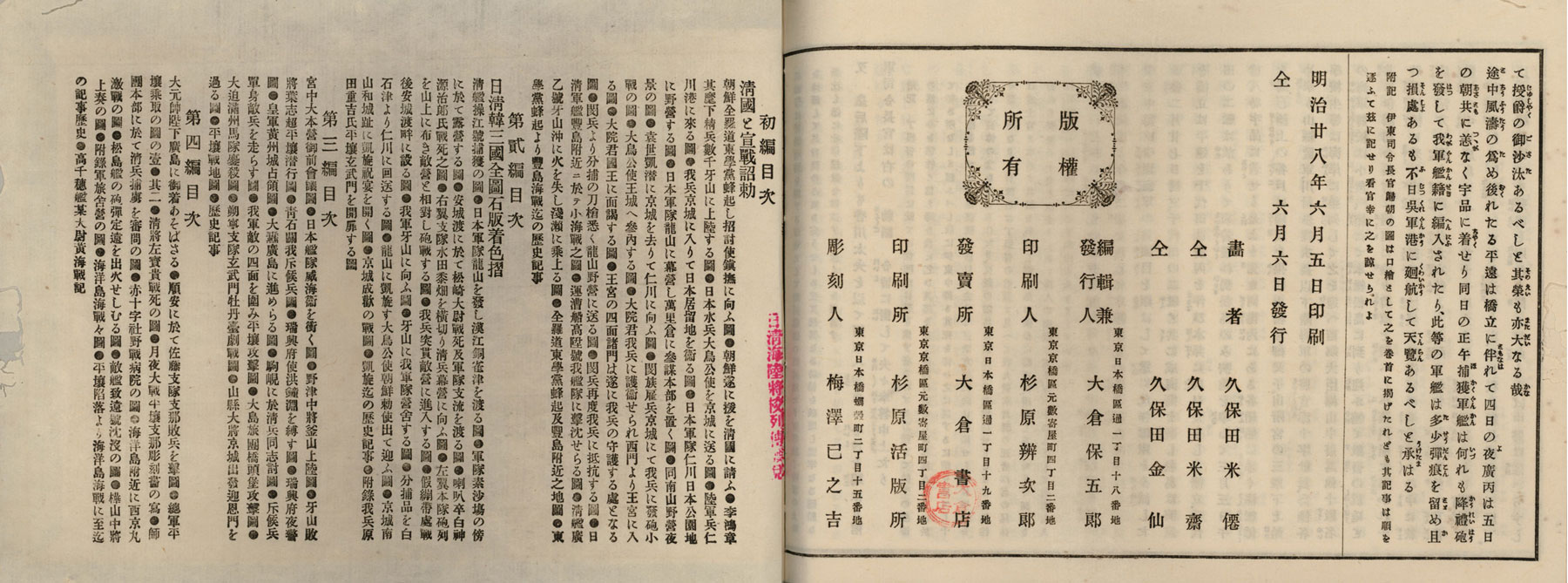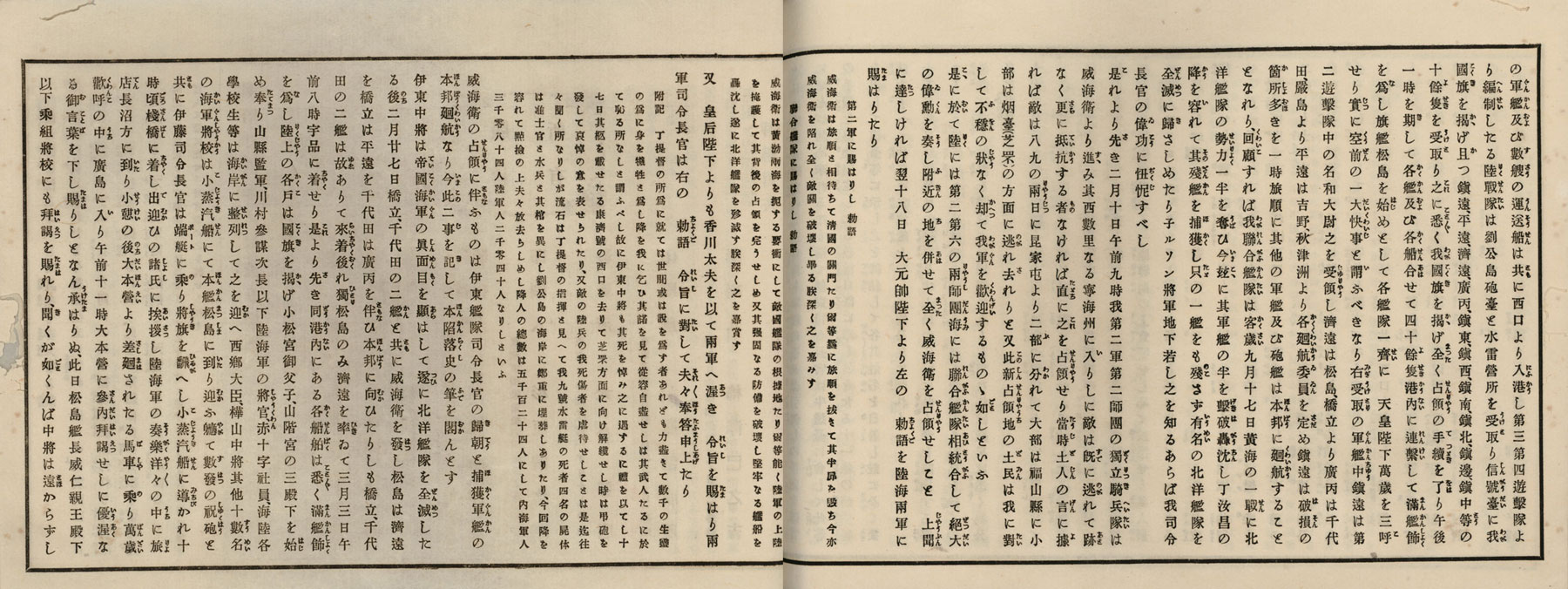About This Book
Volume 9 of a total of eleven bound volumes1 forming a pictorial account of the first Sino-Japanese War, from its outbreak in the summer of 1894 to Japan's sea-victories at Weihaiwei, Japan's advance into Manchuria and finally the peace treaty ending the war in April 1895. The eleven volumes were published at irregular intervals between October 21st 1894 and June 6th 1895. Each volume has an introduction written by a well-known figure of the time. The books were produced from carved woodblocks and are bound in the usual method of "bound-pocket books" (Fukuro toji 袋綴じ). Volumes 5 through 11 have English captions above the illustrations.
The illustrations in these books were widely dispersed overseas to an audience closely following the war, as can be seen from the below illustrations from Volume 6 that appeared in the 1895 French publication Revue Encyclopédique: Recueil Documentaire Universel et Illustré, published by Georges Moreau in Paris.
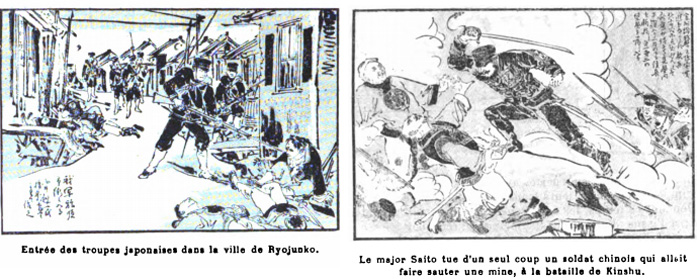
Source: Japan at the Dawn of the Modern Age – WoodblockPrints from the Meiji Era, Louise E. Virgin, Donald Keene, et. al.,MFA Publications, 2001, p. 68.
"A unique and important source of inspiration for the Sino-Japanese War print artists was the journalistic reports written and illustrated by the Kyoto painter Kubota Beisen (1852-1906). Accompanied by his two sons, Beisai and Kinsen, Beisen actually followed the troops [the First Army division] and recorded their battles in words and sketches. And Beisen himself was depicted almost as a war hero in a small number of triptych designs." (See the print Ban-Banzai for the Great Japanese Empire! Illustration of the Assault on Songhwan: A Great Victory for Our Troops.)
Source: A Much Recorded War: The Russo-Japanese War inHistory and Imagery, Fredrick A. Sharf, Anne NishimuraMorse, Sebastian Dobson, MFA Publications, 2005, p. 40-41.
"In their ten-volume2 Illustrated Record of the Battles of the Sino-Japanese War, from 1894-95, Beisen and his two sons describe the events of the war against a landscape this is beholden to East Asian literati painting and prints, with fibrous texture strokes used to define mountainsides and riverbanks and stippling to suggest the foliage on the trees. Yet the artists have consistently modeled the figures of the Japanese soldiers with light and darks to heighten the solidity of their forms. This modeling contrasts with the time-honored use of simple hooked outlines to define the figures of the Chinese combatants."
Advertisement
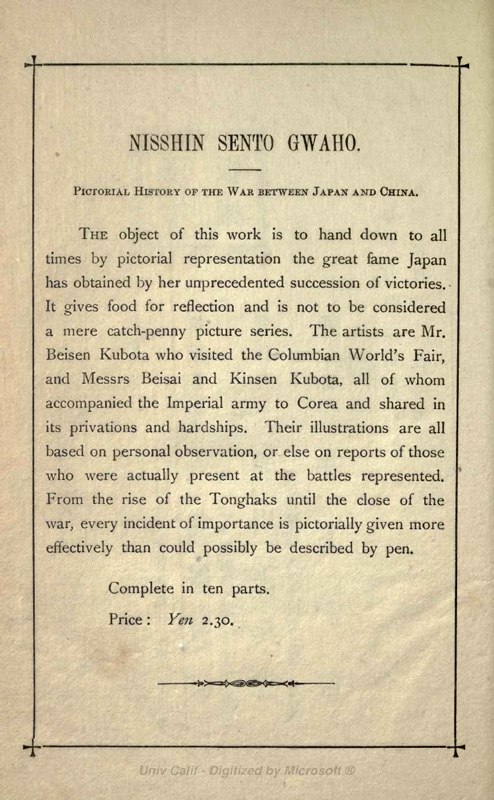
Advertisement appearing in A Concise History of the War Between Japan and China,
compiled by Jikichi Inouye, Osaka: Z. Mayekawa, Tokyo: Y. Okura, 1895.
compiled by Jikichi Inouye, Osaka: Z. Mayekawa, Tokyo: Y. Okura, 1895.
[note: while the ad states "Complete in ten parts." an eleventh volume was added at a later date.]
2015 Reprint of All Eleven Volumes
In 2015, the Osaka publisher Sōgensha 創元社 reprinted all eleven volumes in a single 470 page volume with additional commentary.
Egakareta Nisshin Sensō: Kubota Beisen "Nisshin sentō gahō": eiin, honkokuban, gasha Kubota Beisen, Kubota Beisai, Kubota Kinsen ; Ōtani Tadashi, Fukui Junko hen.
描かれた日清戦争 : 久保田米僊「日清戦闘画報」 : 影印・翻刻版
2 See note 1 above.
Volume 9, published on June 5, 1895, after the war's end on April 17, portrays events related to the last major engagement of the war, the Battle of Wei-hei-wei, and is a follow-on of the events pictured in Volume 8. The first illustration (see below) shows Vice Admiral Itō Yuko (1843-1914), commander-in-chief of the Combined Fleet that defeated the Chinese Northern Fleet led by Admiral Tei Josho (more commonly known as Admiral Ding Ruchang or Ting Ju-ch'ang) in February 1895, receiving a gold watch from the Emperor.1 The last illustrations relate to Admiral Itō's act of chivalry in ordering the return of a captured Chinese battleship to transport the body of Chinese Admiral Tei, who committed suicide after surrendering, back to China.
1 The awarding of the gold watch,along with Admiral Itō's act of chivalry in returning Admiral Ting's body to China, is reported on in an article "Some Japanese Warriors" by J. H. De Forest, profiling various Japanese military heroes involved in the Russo-Japanese War (1904-1905), appearing in the August 11, 1904 issue of the New York newspaper The Independent.
Book Details
| IHL Catalog | #906 |
| Title/Description | Illustrated Account of the Sino-Japanese War, Volume 9 日清戦闘畫報* 第九編 (Nisshin Sentō Gahō, daikyū hen) *typically seen written as 日清戦闘画報 [also written as 日清戰鬪畫報 and 日清戰鬥畫報] |
| Artist |  left: detail from colophon 畫者 [illustrators]: 久保田 米 僊 久保田 米 齊 久保田 金 仙 |
| Signature | illustrations not signed unless noted on above thumbnails |
| Seal | illustrations not sealed unless noted on above thumbnails |
| Publication Date | June 6, 1895 明治廿八年六月六日發行 |
| Edition | |
| Publisher | Ōkura Yasugorō 大倉保五郎 (Ōkura shoten)- Tokyo |
| Carver | Umezawa Minokichi 梅澤巳之吉 |
| Printer | Sugihara Benjirō 杉原辨次 |
| Impression | excellent |
| Colors | excellent |
| Condition | good - minor toning throughout; binding and all pages in tact with little edge or paper wear; minor insect damage on several illustration pages; insect damage primarily in margins on most text pages |
| Miscellaneous | |
| Genre | ehon 絵本; senso-e |
| Format | fukurotoji |
| H x W Paper | 6 3/4 x 9 1/4 in. (17.1 x 23.5 cm) |
| Collections This Book | Museum of Fine Arts, Boston 2000.338 (Volume 3); Victoria & Albert Museum E.2531-1925 (volumes 1-5 and 8); Rijksmuseum Netherlands RP-P-2005-594; Japanese Special Collection in Sterling Memorial Library at Yale University, ID #1121 (Volume 3); UCLA Libraries and Collections Record ID 2035932 (Volumes 1-3); University of Chicago Library Call No.: J6289.2 2269 (Volumes 1-3); Cornell University Library call number Asai Rare DS765.K95 (Volumes 1-11); Williamsburg Research Libraries Partnership Swem Library DS765 .K82 v.1 (Volumes 1-11); Columbia University Libraries East Asian SPECIAL COLL. DS765.K82 1894 (Volumes 1-11); Brown University Library Hay Military DS765.K83x 1894 (Volumes 1-8); Harvard University HOLLIS: 007566215 (Volumes 1-11); St. Louis Museum of Art 854.2010, 855.2010, 848.2010 (Volumes 4, 5, 8) |
| Reference Literature | Japan at the Dawn of the Modern Age – Woodblock Prints from the Meiji Era, Louise E. Virgin, Donald Keene, et. al., MFA Publications, 2001, ill. 23, p. 63; In Battle's Light: Woodblock Prints of Japan's Early Modern Wars, Elizabeth de Sabato Swinton, Worcester Art Museum, 1991, p. 14; The World of the Meiji Print: Impressions of a New Civilization, Julia Meech-Pekarik, Weatherhill, 1986 p. 206; Conflicts of Interest: Art and War in Modern Japan, Philip K. Hu, et. al., Saint Louis Museum of Art, 2016, p. 158-160. |
5/16/2020
12/8/2018


